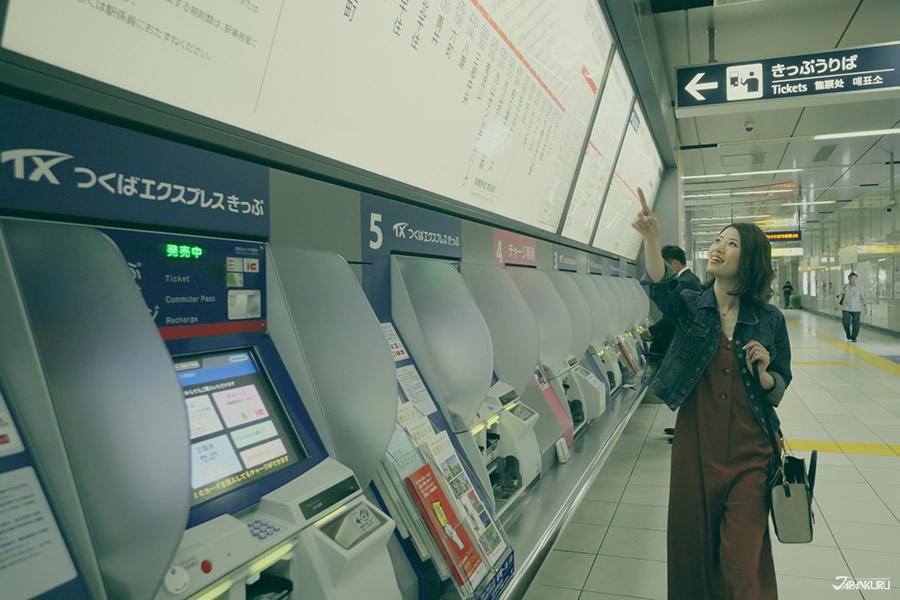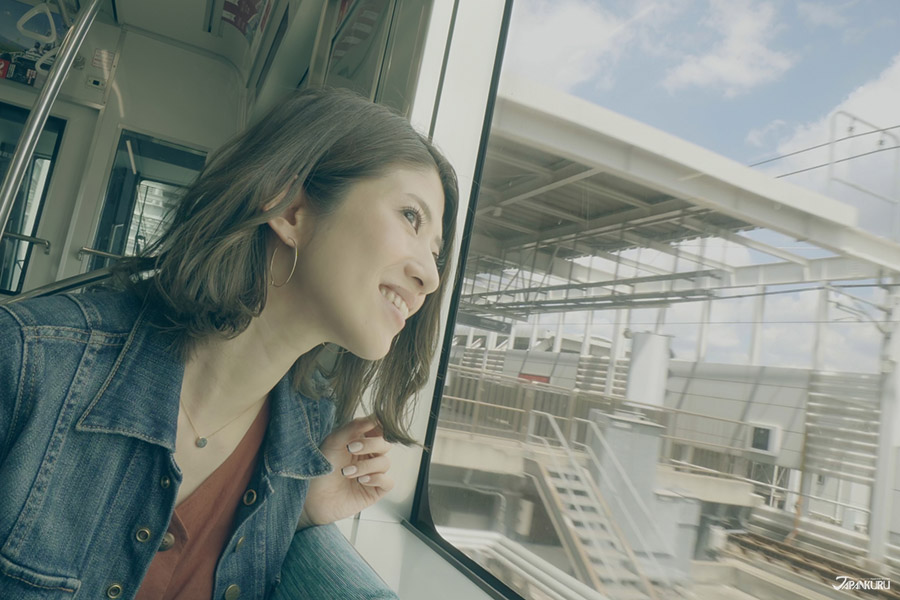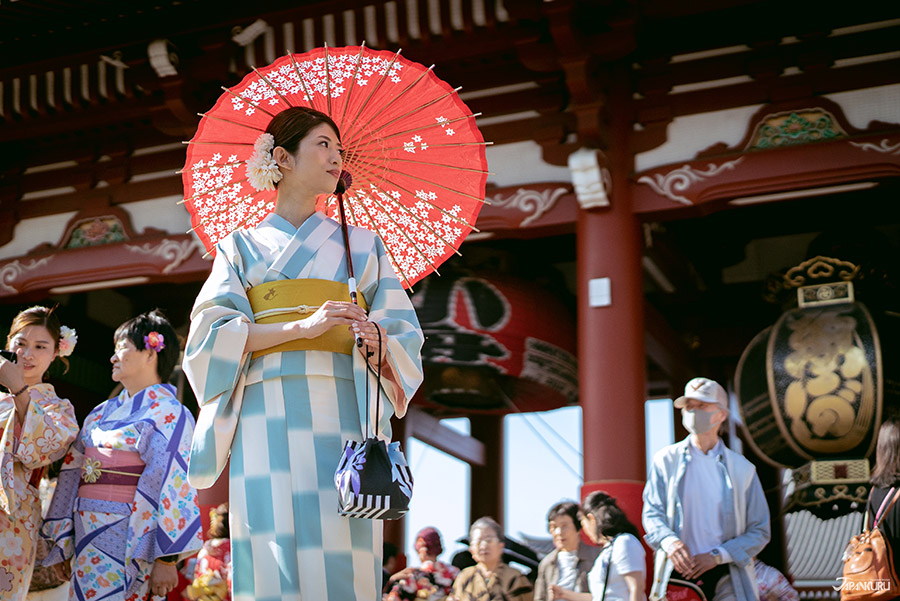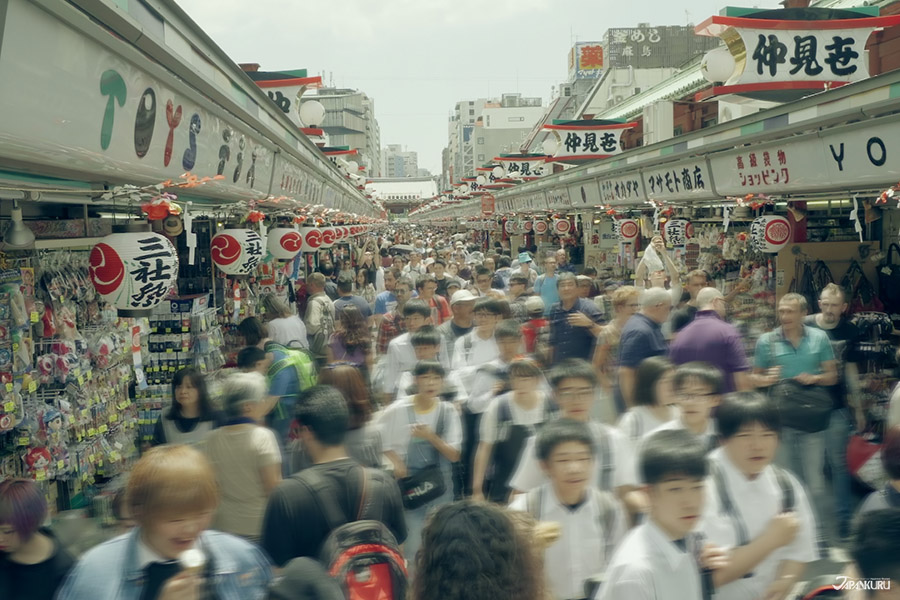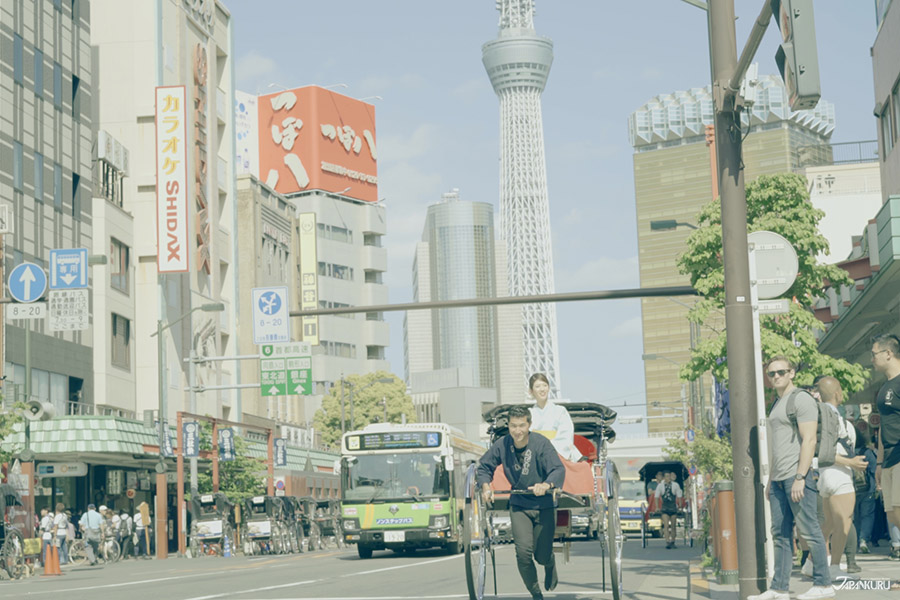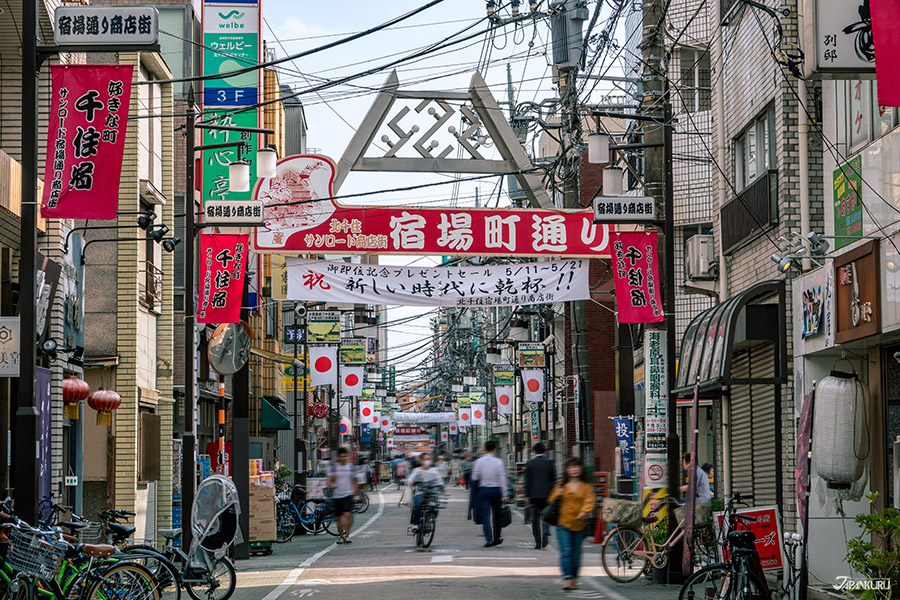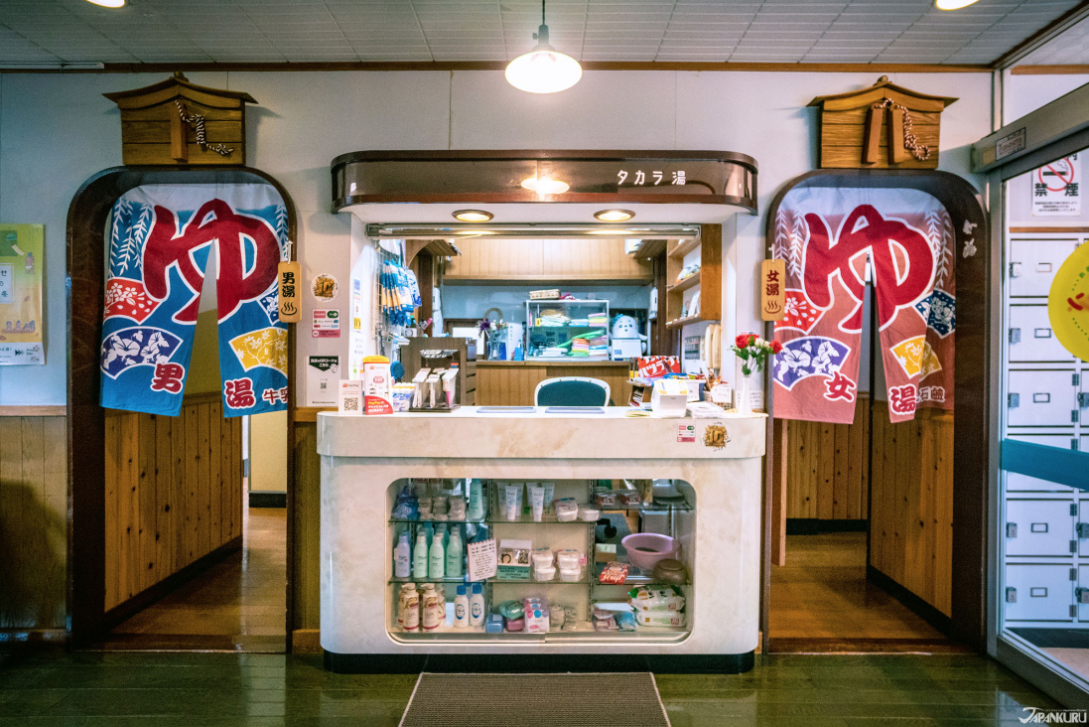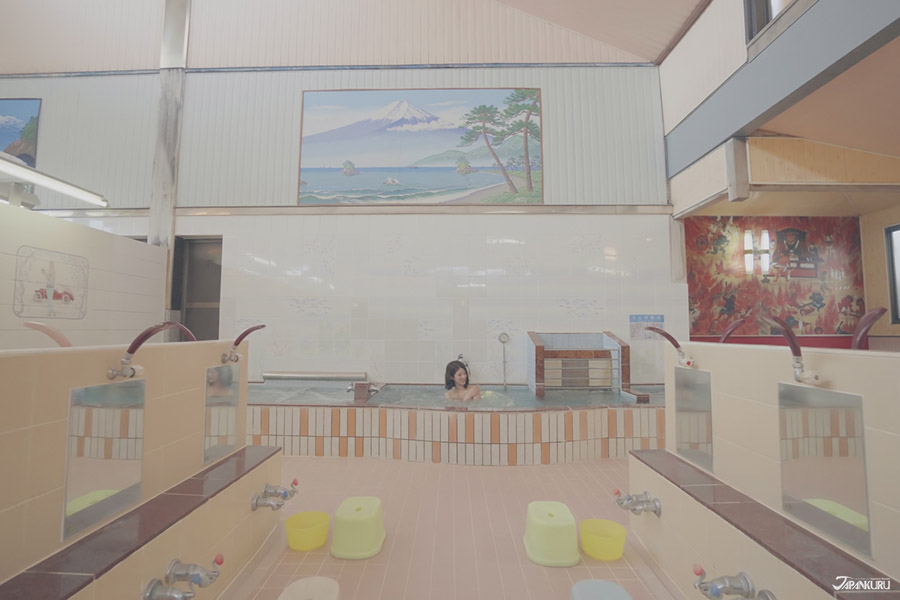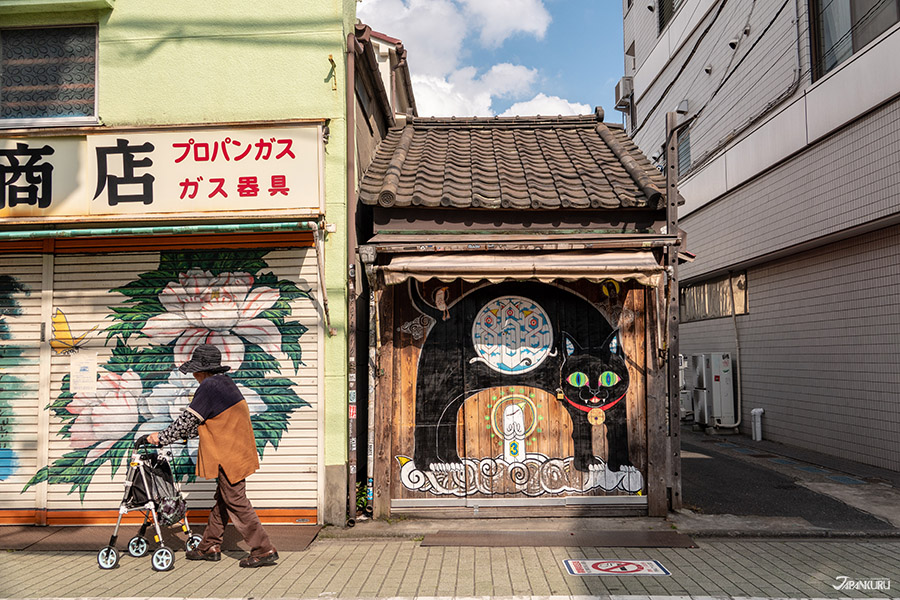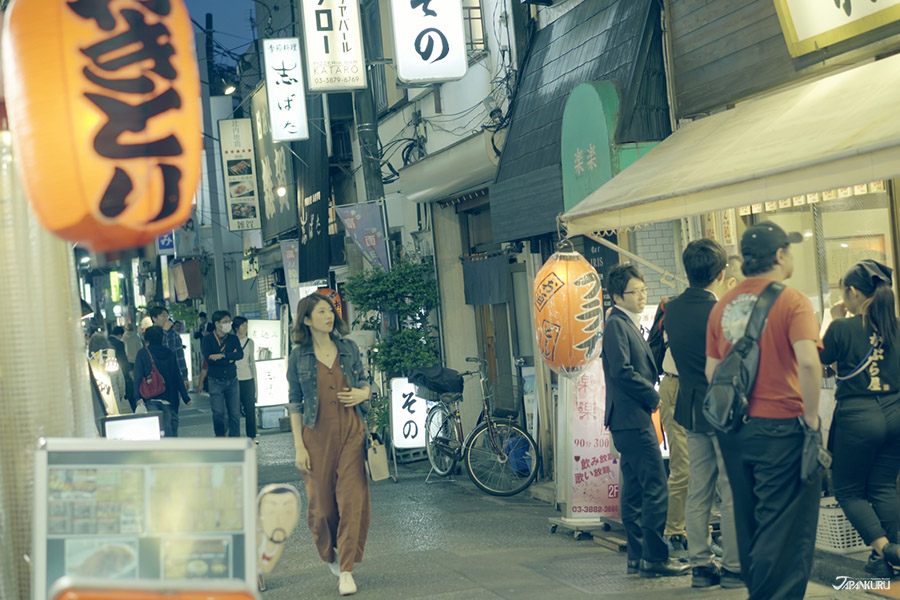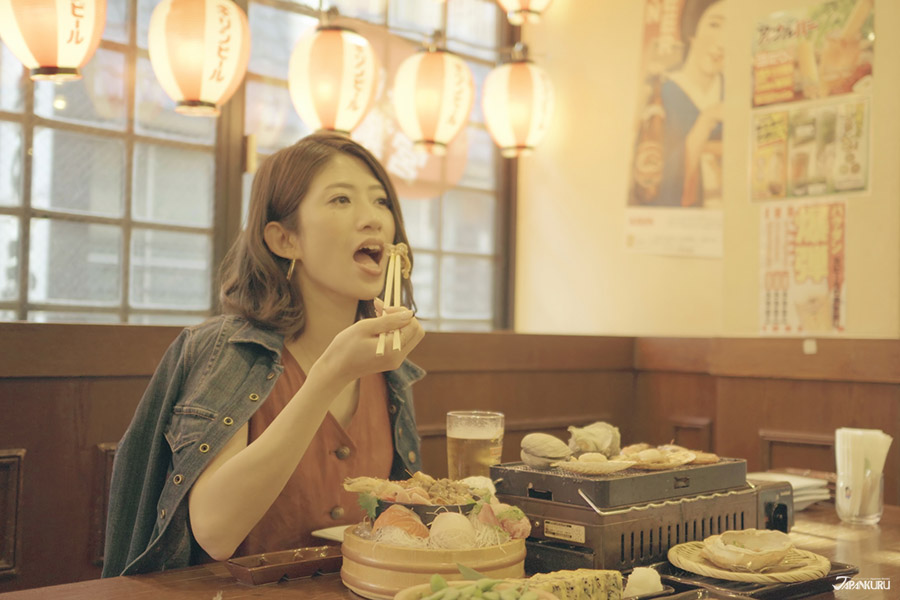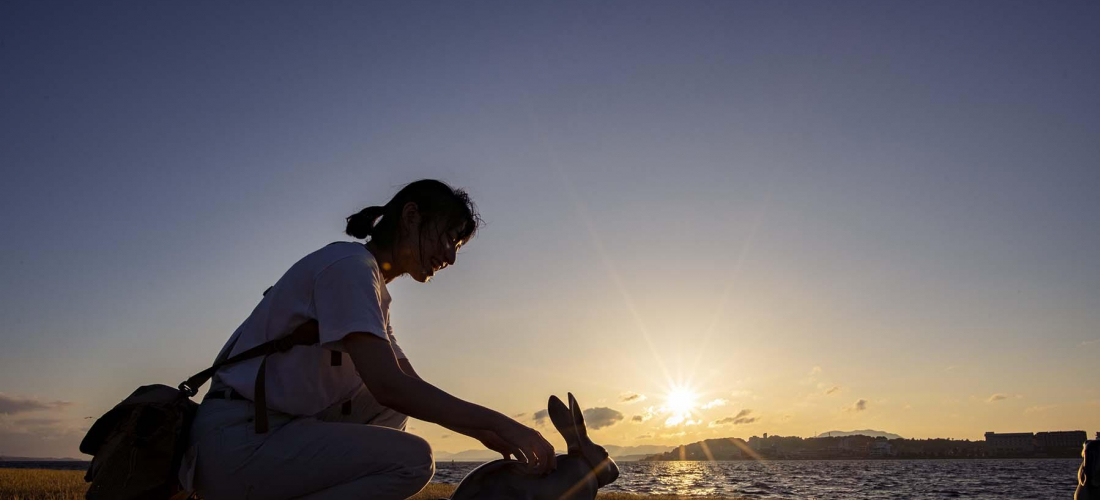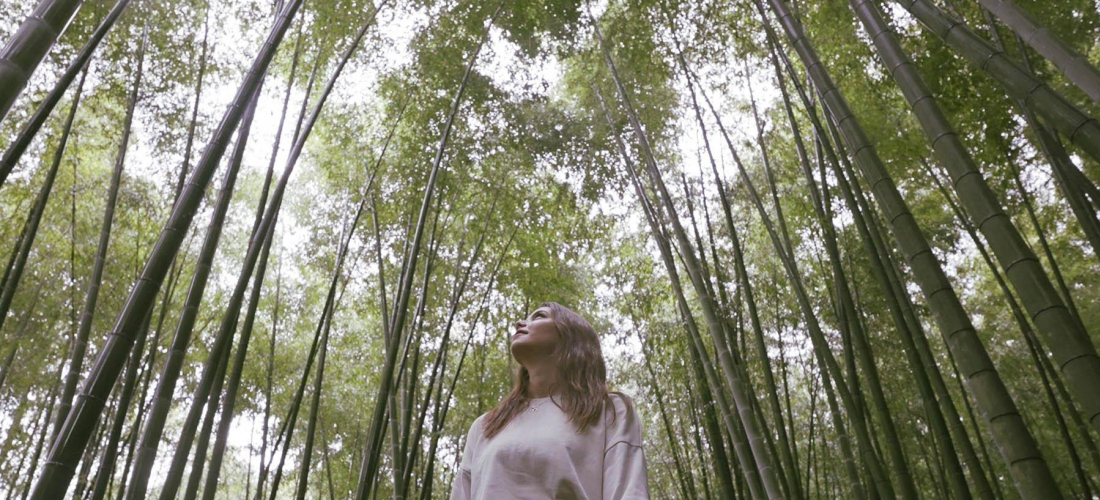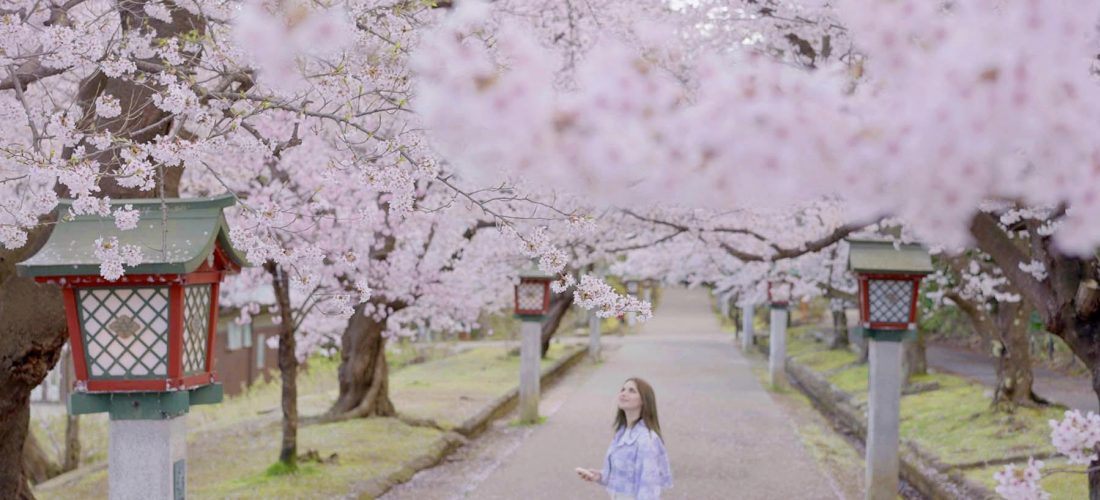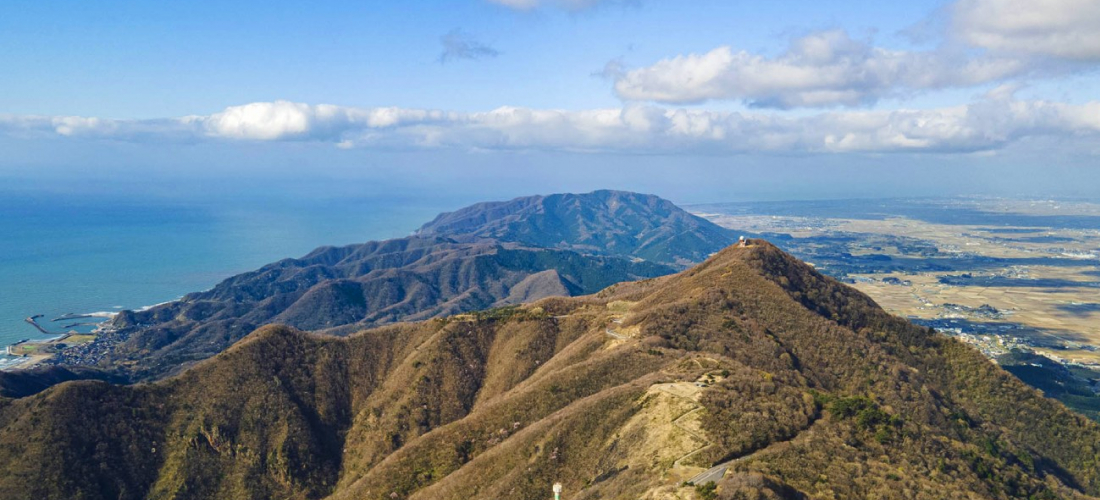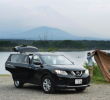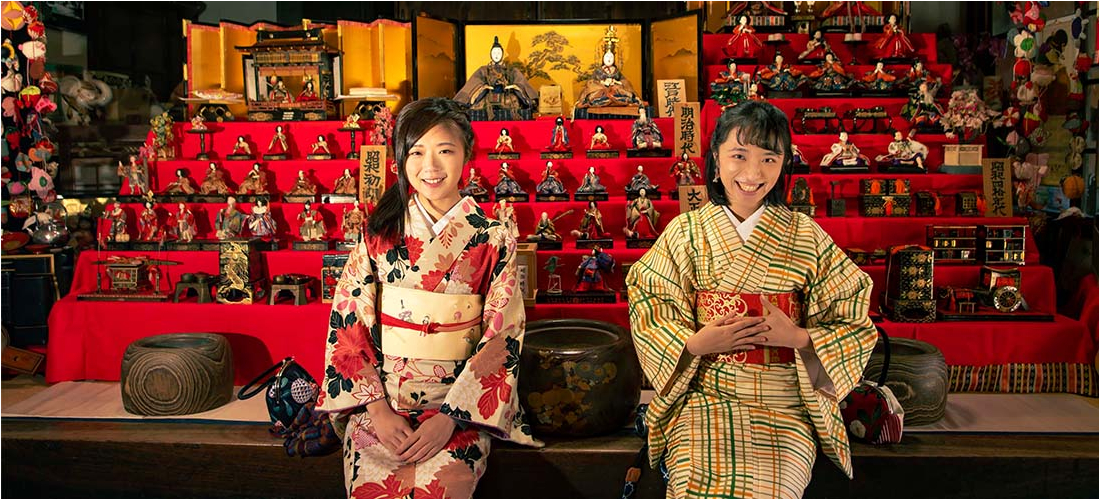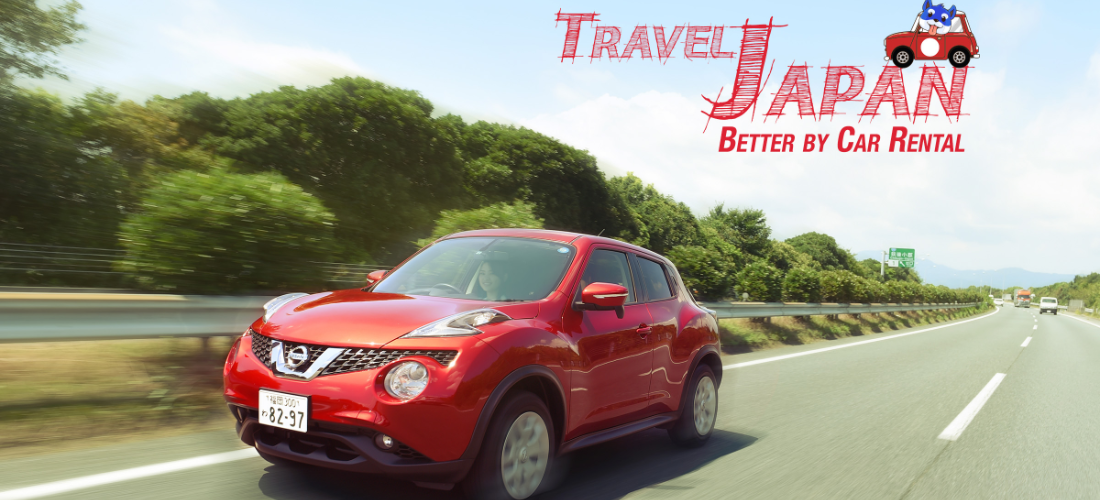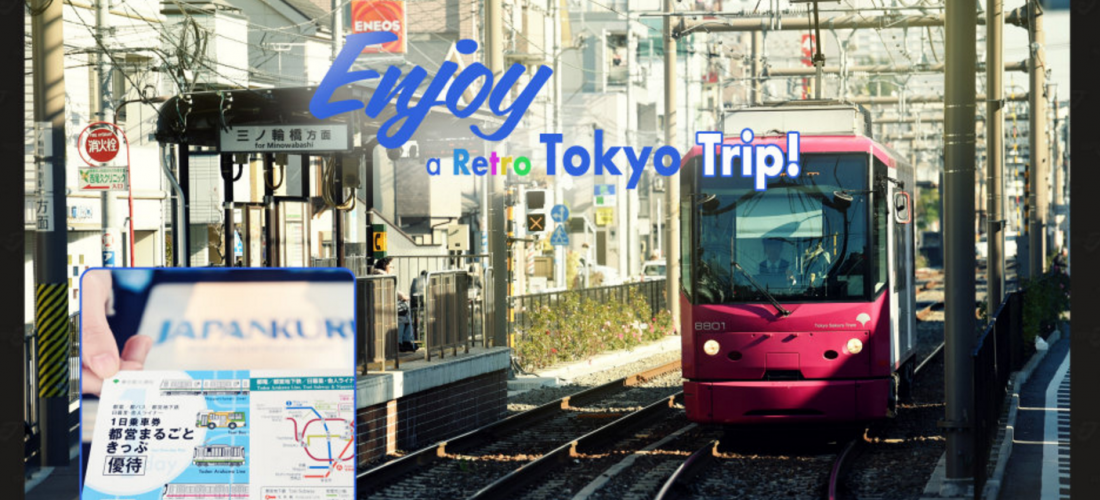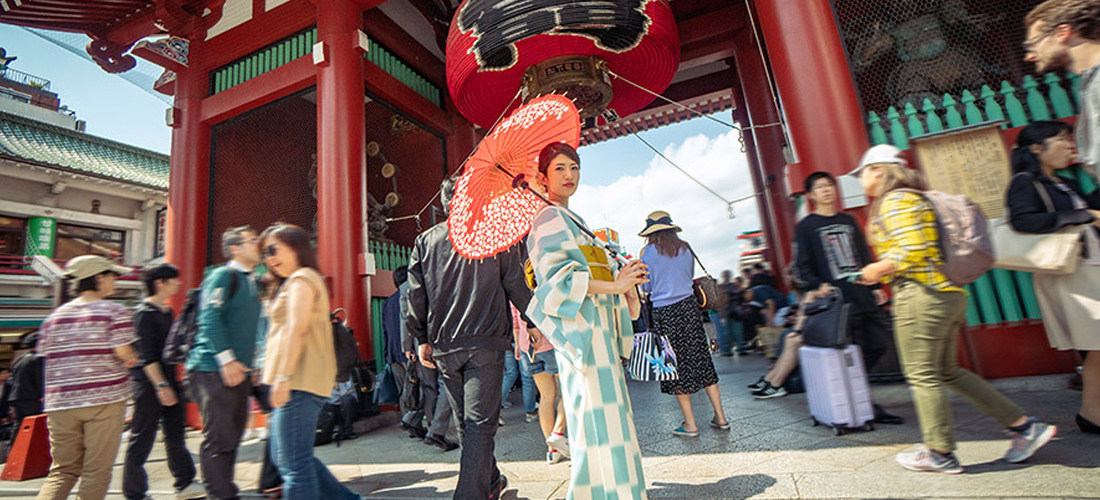
CONTENTS
Tokyo est une ville aux plusieurs visages. Vous pouvez passer une journée entière à Shinjuku et Shibuya, et admirer les grattes-ciel et les bâtiments tout neuf.. Mais il est aussi important de se rendre dans la zone de Shitamachi à Tokyo! Nous l’avons évoqué précédemment: il s’agit de la moitié du centre-ville de Tokyo qui était destinée aux classes populaires. Son histoire a fait le charme de la zone grâce à la culture des travailleurs Tokyoïtes et des voyageurs. Joignez-vous à nous pour ce formidable voyage dans le temps à bord du Tsukuba Express!
La ligne Tsukuba Express: Ce qui s’apparente le plus à de la téléportation!
Akihabara → Asakusa → Kita-Senju, Tout Ca en 10 minutes!
Connaissez-vous la ligne TX Tsukuba Express?
Il s'agit d'une ligne ferroviaire très rapide reliant Akihabara à Chiba jusqu'à Tsukuba dans la préfecture d'Ibaraki. Longue de 58.3 km avec 20 gares, vous pourrez vous rendre au Mont Tsukuba (l'une des 100 montagnes les plus belles du Japon) en moins d'une heure depuis Akihabara ou Tokyo. Ce n'est peut-être pas un TGV, mais on s'en rapproche! La ligne est aussi un très bon moyen de se rendre dans différentes zones de Tokyo. Vous pourrez par exemple joindre Akihabara à Asakusa en seulement quatre minutes, ou Asakusa à Kita-senju en six.
Nous avons déjà écrit plusieurs articles sur certaines des régions accessibles avec cette ligne. Par exemple sur Nagareyama et son atmosphère nostalgique, ou encore sur le Mont Tsukuba, souvent assimilé au Mont Fuji. Si vous avez prévu de prendre le train pour une journée, Tsukuba Express propose même des pass applicables sur certaines lignes du métro de Tokyo. C'est le moment d'un profiter!
Par contre, cette fois-ci, nous ne sortirons pas de la métropole. Nous nous contenterons de profiter de la vitesse du Tsukuba Express pour nous rendre dans le quartier de Shitamachi à Tokyo, et apprécier la vue au passage!
En avant toute pour Asakusa!
Premier arrêt: Toe Edo Asakusa Style
Commençons notre journée par Asakusa, très vite atteint avec le Tsukuba Express. Si vous connaissez un peu Tokyo, vous savez peut-être que la gare du Tsukuba Express se trouve dans une autre zone que celle des autres gares de métro dans Asakusa. En sortant de la station, vous vous retrouverez nez-à-nez avec le célèbre magasin Don Quijote (où vous pouvez acheter pratiquement tout ce qui existe sur Terre), un ancien quartier d'artistes, et quelques boutiques adorablement désuètes. Il sera aussi difficile de rater des couples ou groupes de personnes habillés en kimono (ou parfois yukata), ce qui colle très bien à l'ambiance! Si vous êtes vous-même tenté par l'habit traditionnel japonais, nous vous conseillons la fameuse boutique de location de kimono Aiwafuku.
Deuxième arrêt: la rue commerçante de Nakamise
Une fois paré.e de vos plus beaux atours, rendez-vous à la porte Kaminarimon du temple Sensoji (parfois appelé "temple d'Asakusa"). Une fois là, éloignez-vous du temple et continuez à marcher! Beaucoup de touristes se rendent ainsi dans la rue commerçante de Nakamise pour leur première visite de Tokyo, mais l'endroit est si dynamique que vous êtes sûr d'y trouver quelque chose d'unique. Avec autant de personnes venant du monde entier pour apprécier la culture traditionnelle japonaise, vous aurez l'impression qu'un festival est organisé chaque jour (pour les plus courageux, vous pouvez d'ailleurs visiter le temple lorsqu'un véritable festival a lieu!). De plus, avec votre kimono, vous pourrez tester votre charme "japonisé", et des touristes vous demanderont peut-être d'être pris en photo avec vous!
Troisième Arrêt: Brûlez de l’encens au temple Sensoji
On ne dirait pas comme ça, mais le temple Sensoji d'Asakusa est le temple le plus vieux de Tokyo! Il est dédié à Kannon Bosatsu, gardien d'Asakusa pour plus d'un millénaire et demi. Lorsque le temple est devenu un lieu de pélerinage durant la période Edo, le shogun Ieyasu Tokugawa s'en est auto-proclamé protecteur. La région a ainsi prospéré pour devenir un des centres culturels du Japon. Après le grand incendie causé par le tremblement de Terre du Kanto, puis après les bombardements aériens américains sur Tokyo, Asakusa a un peu perdu de sa splendeur… Mais grâce l'appui des locaux, le quartier s'est dynamisé de nouveau. Le temple Sensoji est donc un monument durable que tous les visiteurs du monde entier veulent visiter!
Avant de vous rendre au temple, pensez à vous rincer les mains à la fontaine en se servant des louches prévues à cet effet. C'est un des petits rituels lorsqu'on visite n'importe quel temple et c'est très drôle à faire! Si vous voulez impressionner les locaux, voici la démarche correcte: prenez la louche dans votre main droite et rincer votre main gauche, puis changez de main, enfin, mettez un peu d'eau dans votre main gauche et rincez-vous la bouche avec! Si vous regardez bien, vous remarquerez que les Japonais crache un peu d'eau durant le rituel. Faîtes-bien attention à recracher l'eau dans la gouttière et pas dans la fontaine par contre.. Vous n'avez plus qu'à rincer la louche avec l'eau de la fontaine avant de la reposer.
En face de l'entrée du temple, vous trouverez un énorme autel d'encens. Vous pouvez faire brûler votre propre baton d'encens si vous le désirez, mais la plupart des gens se contentent de respirer la fumée pour se porter bonheur!
Avant de partir, n'oubliez pas d'acheter un papier de bonne fortune. Beaucoup de temples et de sanctuaires vendent ces "omikuji", mais ceux de Sensoji sont connus pour être.. sévères. La plupart des gens reçoivent un papier avec un avenir en demi-teinte ou légèrement négatif. Donc si vous lisez une bonne nouvelle sur ce papier, c'est qu'elle va forcément se produire!
Quatrième arrêt: un petit tour en pousse-pousse
Vous ne manquerez certainement pas les hommes (mais aussi les femmes) alignés devant la porte de Kaminarimon, vous invitant pour une petite promenade en pousse-pousse. Avez-vous déjà essayé? Il n'y a rien de plus typique que monter dedans en portant un kimono dans Asakusa. Plutôt que zigzaguer au milieu de la foule, le "conducteur" vous emmènera le long des allées et des avenues qui se trouvent autour du quartier. C'est très bien pour se relaxer après une longue journée de marche, tout en profitant d'une agréable aventure.
Et pour l’après-midi? Petit tour à Kita-Senju!
Après avoir brillé de mille-feux en kimono et peut-être mangé quelque chose à Asakusa (essayez les "monjayaki", sorte d'okonomiyaki à la façon de Tokyo), redescendez dans la gare d'Asakusa pour la ligne TX Tsukuba Express. En six minutes, vous vous retrouverez à Kita-Senju.
Kita-Senju n'a peut-être pas la grandeur de sites historiques comme Sensoji, mais reste un quartier très populaire depuis au moins la période Edo. Avant que la ville s'appelle Tokyo, l'une de ses principales rues traversait Kita-Senju, et reliait Mito à la préfecture d'Ibaraki. La région a donc toujours été un aimant pour les voyageurs cherchant à socialiser. Aujourd'hui, Kita-senju est une zone de correspondances où de nombreuses lignes ferroviaires se croisent. Très moderne et développée, c'est un quartier adoré des locaux qui garde tout de même un certain charme désuet!
Premier Arrêt: Rafraîchissez-vous dans les eaux des bains Takaya-yu
Avec l'arrivée de la douche privée et de la baignoire à la maison, la culture du bain publique au Japon (appelé sento) a un peu perdu de sa splendeur d'antan. Mais Kita-Senju est toujours très populaire pour ses nombreux bains de toutes sortes. Se mettre nu et se baigner avec des étrangers est une expérience libératrice qu'on ne voit que très rarement hors du Japon! Notre sento préféré à Tokyo se nomme Takara-yu, que nous avons déjà évoqué précédemment. Le bâtiment a plus de 100 ans et donne sur un jardin traditionnel parfait pour se relaxer après votre baignade. Qu'importe le temps, il n'y a rien de plus agréable que de sentir le vent frais sur sa peau pour se rafraîchir des eaux chaudes des bains.
Deuxième Arrêt: Flânez dans la rue de Shukubamachi en soirée
Etant un croisements pour les voyageurs, Kita-Senju a toujours été plein de boutiques et de restaurants pour grignoter. Les rues commerçantes sont certes étroites mais remplies de toutes sortes de choses à acheter ou à déguster. Bien que calme en journée, Kita-Senju s'anime des nombreux travailleurs qui sortent de leur bureau pour se détendre. En vous éloignant de la gare, les lumières et l'odeur de nourritures se feront de plus en plus intense. L'endroit est connu pour ses izakayas de toutes tailles (sortes de tapas japonais où on peut boire et manger) et vous rentrerez chez vous le ventre plein, c'est sûr!
Promenez-vous autour de la gare la nuit
Pas prêt.e à rentrer tout de suite? C’est parti pour du shopping!
Si vous avez encore du temps et que vous êtes à Kita-Senju, la gare a beaucoup à offrir! Vous ne trouverez non pas un, mais deux galeries commerçantes: Marui et Lumine. Après vous êtes imprégné.e de l'ambiance de la culture des petites rues nostalgiques, pourquoi ne pas retourner sous la lumière des néons des centres commerciaux? Puis rendez-vous sur le toit de la gare de Kita-Senju pour apprécier une dernière fois l'atmosphère nocture et urbaine et prendre quelques photos de Tokyo.
Et puis pourquoi vous limiter à Tokyo avec le TX Tsukuba Express?
Vous pouvez bien sûr sortir du centre-ville de la mégalopole. Profitez du Tsukuba Express pour vous rendre au Mont Tsukuba ou encore prenez une journée dans la banlieue de Tokyo à Chiba. La zone métropolitaine de Tokyo est à vous!
Pensez à lire JAPANKURU pour des articles quotidiens passionnants!
Ou ajoutez-nous sur Instagram et Facebook et partagez vos photos du Japon.🗾
PROFILE
Follow us @Japankuru on Facebook, Instagram, and Twitter!
COMMENT
FEATURED MEDIA
VIEW MORE
Narita Airport Tax-Free Shopping List 나리타공항 면세점 쇼핑 리스트 #pr #calbee #jagapokkuru #japanesesnacks #japanesefood #japanesesouvenir #japantravel #japantrip #naritaairport #hokkaido #나리타국제공항 #나리타공항면세점 #나리타공항면세점과자 #일본공항면세점 #일본기념품쇼핑리스트추천 #공항면세점쇼핑리스트 #일본과자추천 #면세점일본과자 #일본기념품추천 #일본과자 #자가폿쿠루 #일본간식 #일본과자쇼핑 #일본면세점필수템 #일본기념품쇼핑

Asakusa's Sanja Matsuri, one of the biggest festivals in all of Tokyo, is almost here! Make sure you check out the festival route so you don't miss all the festivities this May. #asakusa #sanjafestival #sanjamatsuri #asakusashrine #sensoji #sensojitemple #japanesefestival #shintoshrine #japaneseculture #tokyo #tokyotrip #tokyotravel #asakusasightseeing #matsuri #japantrip #japantravel #springinjapan #tokyotravel #japankuru #산자마츠리 #아사쿠사 #일본마츠리 #일본여행 #일본5월

Odaiba's DiverCity Tokyo Plaza is home to the famous real-size 20m-tall Unicorn Gundam, and the popular shopping center has even more Gundam on the inside! Check out the Gundam Base Tokyo on the 7th floor for shelves upon shelves of Gunpla, and the Gundam Base Tokyo Annex on the 2nd floor for cool anime merchandise. Both shops have tons of limited-edition items! #pr #odaiba #tokyo #tokyotrip #japantrip #japantravel #PR #divercity #divercitytokyoplaza #tokyoshopping #gundam #unicorngundam #gundambasetokyo #anime #otaku #gunpla #japankuru #오다이바 #다이바시티도쿄 #오다이바건담 #건담 #일본건담 #건프라 #건담베이스도쿄

Evangelion, in miniature!? Tokyo's SMALL WORLDS Miniature Museum is actually a must-see for anime lovers, thanks to the tiny Evangelion Hangar and Tokyo-III... plus a whole universe of other scenes both real and fictional. #smallworlds #smallworldstokyo #tokyotrip #tokyotravel #evangelion #eva #anime #miniature #miniatures #animefigure #japantrip #japantravel #에반게리온 #스몰월드 #에반겔리온 #スモールワールズ #오다이바 #아리아케

Have you sat down for a snack at Sumida Aquarium yet? This aquarium next to Tokyo Skytree is known for its penguins and garden eels, but we can't get enough of their cute snacks! There are lots of good seats around the aquarium, too, so it almost feels like one big cafe. 🐧 • Find out more at Japankuru.com! (Link in bio.) • #japankuru #sumidaaquarium #skytree #tokyoskytree #solamachi #sumida #tokyo #tokyotrip #tokyotravel #aquarium #japanesesweets #themecafe #すみだ水族館 #Japan #日本 #일본 #Japon #ญี่ปุ่น #Japão #япония #japantravel #日本旅行 #日本旅遊 #japan_of_insta #japantrip #traveljapan #japan🇯🇵 #igerstokyo #explorejapan

For anime fans, the Evangelion areas at Small Worlds Miniature Museum are a must see! The tiny miniature people in the Evangelion Hangar look like ants beneath the moving Unit-01, Unit-00, and Unit-02! And over in Tokyo-III, characters like Shinji, Rei, and Katsuragi live life on a miniature scale. #odaiba #tokyo #tokyotrip #japantrip #japantravel #ariake #smallworlds #miniaturemuseum #smallworldstokyo #tokyotravel #evangelion #eva #anime #miniature #miniatures #animefigure #japankuru #스몰월드 #에반게리온 #오다이바 #오다이바관광 #오다이바스몰월드 #미니어쳐

